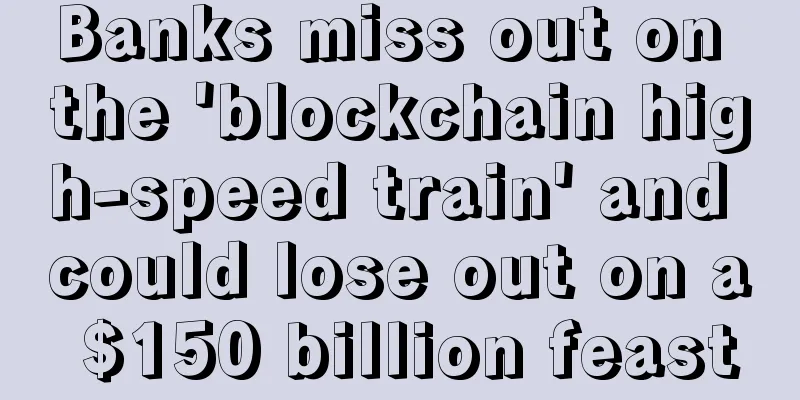Banks miss out on the 'blockchain high-speed train' and could lose out on a $150 billion feast

|
The financial industry has paid a lot of attention to blockchain technology. Although more and more banks have shown interest in distributed ledger technology, blockchain technology, the overall attitude is still "wait and see". Some experts believe that if banks do not get on the blockchain train as soon as possible, they will pay a high price in the long run. It must be said that the financial sector seems to struggle with the decision-making process whenever blockchain technology is mentioned. Depending on who you ask, the technology may not [have] a first-mover advantage that needs to be considered. Distributed ledger solutions take time to develop, and initial projects will require some fine-tuning. Blockchain’s moment has arrived Additionally, banks seem to have a herd mentality when it comes to participating in the blockchain industry. For example, joining consortiums such as the R3 banking consortium, but this is not the best outcome in the long run. At the same time, it is important to establish partnerships in this field at an early stage. All R3 participants will use similar technologies that are interoperable between all these institutions. This approach may go a long way in terms of cross-border payments. On the other hand, the banks’ approach makes it hard to see the way forward. Because blockchain will have the biggest impact in the areas of international payments and trade finance, there really needs to be a clear course of action. At the moment, there doesn’t seem to be a particular direction for all these projects to move forward. The innovative side of blockchain technology cannot be ignored. The number of banks not participating in blockchain development efforts is still far greater than the number of banks that want to innovate. For competitors that fail to keep up with customer expectations and demands, financial losses will almost certainly occur quickly. To be more precise, banks could lose up to $150 billion in revenue by not participating in blockchain development. Experimenting with distributed ledger technology before releasing it to the public is the right course of action. However, rather than being wary of potential scalability issues, a proactive approach is necessary. Financial institutions need to step up their presence in blockchain developments if they want to stay ahead of the curve. In this age of innovation and divergent customer demands, doing nothing is simply not an option. |
<<: Fintech startup Revolut raises €7.75 million to enable zero-fee overseas transactions
Recommend
A widow's face
A widow's face What is a widow? A widow is a ...
What is the biggest threat to a Bitcoin ETF?
As I waited with the rest of the world for the fi...
What is the fortune of a man with a mole on the bridge of his nose?
In physiognomy, what is the fortune of men with m...
Men's mole physiognomy: People with moles on their necks are more likely to attract villains. Why?
No one wants to have villains around. After all, ...
Face analysis of couple fate
The depth of the fate of a couple is actually rel...
What does it mean if a man has a mole that cries for his husband?
It is very normal for people nowadays to have mol...
What is the personality of a man with droopy eyebrows?
In physiognomy, eyebrows have a great relationshi...
SITA blockchain tokens replace cumbersome travel documents, securely store and protect passenger privacy
Barcelona: Air passengers will soon need only a &...
Is the fate of a square-shaped woman good?
1. Successful career In palmistry, if a person ha...
Which moles can tell a person's wealth and fortune?
Everyone's fortune and luck in life are alrea...
What does the wolf-hearted mole represent?
Everyone has the life they want, and everyone has...
Is a triangular face good or bad? A detailed explanation of the triangular face shape
Physiognomy is a folk knowledge that predicts fat...
Vinny Lingham believes that Bitcoin price can only be used as an investment asset if it breaks through $1,300
Golden Finance News - Bitcoin entrepreneur Vinny ...
What does a woman with a big nose look like?
Do you know what a woman with a big nose represen...
What does a red mole on the face mean?
For people nowadays, many people are troubled by ...









